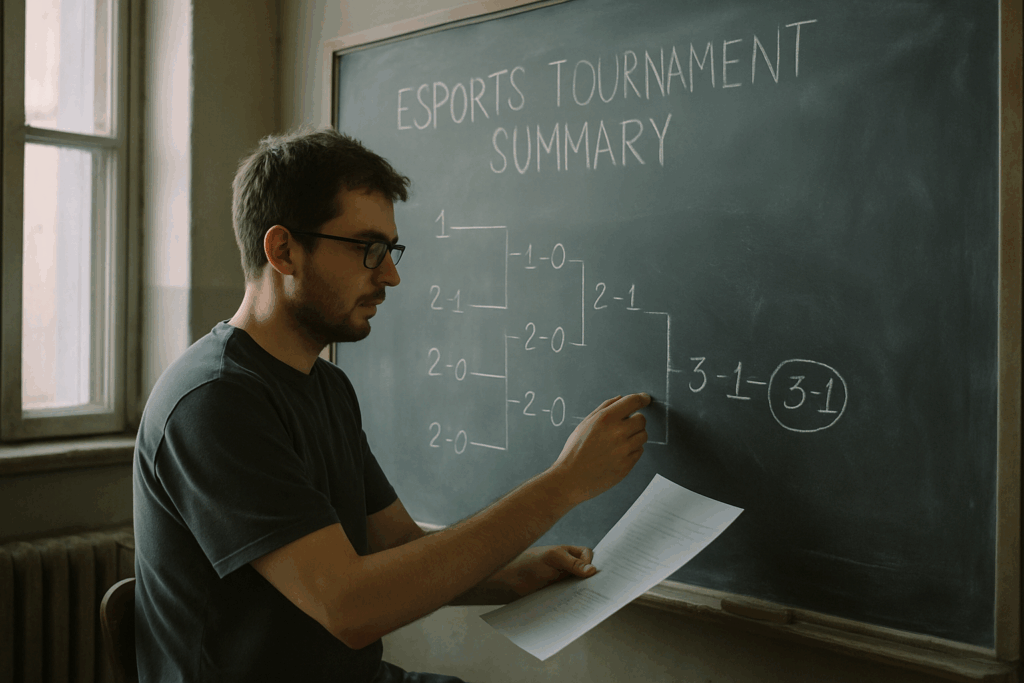Competitive League of Legends has always delivered tension, drama, and highlight-reel moments. But this year’s tournament pushed the limits. From unexpected upsets to tactical breakthroughs, the 2024 season reminded everyone why esports isn’t just a sideshow anymore. We saw veteran squads collapse under pressure and fresh talent rise fast, flipping predictions on their head and pulling massive viewership numbers along the way.
What made this year different? The level of play was sharper, cleaner, less forgiving. Teams came in with refined game plans and second-by-second execution. Coaching staffs leveled up. Pick and ban phases looked like chess boards. And the meta kept shifting, forcing constant adaptation. Everything felt faster, smarter, more brutal.
For fans and players alike, the stakes felt higher than they’ve ever been. The spotlight is intense and the margin of error tiny. This wasn’t just about lifting a trophy. It was about proving which team could survive weeks of pressure, meta shifts, and global expectations without cracking. Every game mattered. No one coasted to finals. That’s what raised the bar.
From Doubts to Domination: How This Squad Redefined the Region
Rough Start: Roster Questions Before the Tournament
Leading into the competition, this roster faced serious scrutiny.
- Key player changes raised questions about team chemistry
- Critics doubted whether the new lineup could deliver under pressure
- Early scrims showed inconsistency, stoking uncertainty among fans and analysts
Despite the question marks, the squad entered with a quiet determination to prove themselves.
Making a Statement: Group Stage Performance
The team silenced the noise quickly and decisively once gameplay began.
- Clean sweeps and coordinated plays made them stand out early
- Tactical discipline and high-confidence decision-making defined their matches
- Their record quickly turned heads and shifted public perception
Rather than just survive the group stage, they dominated it.
Changing the Narrative: A New Standard for the Region
This run did more than just earn the team wins—it reshaped how the region is viewed globally.
- They outperformed longtime favorites with poise and control
- The team’s innovation in key moments set a blueprint for others to follow
- Their success raised expectations for what teams from their region can achieve
The doubters were loud at the start. By the end, this squad gave them nothing left to say.
The match started with both teams locking in high-risk, high-reward comps. Team A went all-in on aggressive early-game pressure with a jungle-mid duo built for mobility and skirmishes. Team B, by contrast, loaded up on scaling—double enchanters, a hyper-carry bot lane, and a frontline built to stall. On paper, it looked like a stomp waiting to happen, but the balance swung—twice.
The first turning point came at minute 14. Team A overcommitted to a dive under mid-tier one, a televised setup that Team B punished with clean teleport response and a 4-for-1 trade. That moment saw the gold gap swing nearly 3k in seconds. But it was the 23-minute Baron fight where things really flipped. Team B had full control but hesitated to commit. Team A’s shotcaller made the bold read—flash engage, full combo, Baron steal, and suddenly the tempo flipped.
Key players drove the outcome. Team A’s mid laner didn’t just land skill shots—he dictated tempo, forcing fights around cooldowns. Team B’s support had two game-saving ultimates but burned flash too early during a critical retreat, costing them vision and objective setup.
Reactions were immediate. Analysts called it one of the cleanest mid-game recoveries in recent memory. Fans lit up forums and streams, praising the calls and the discipline under pressure. From Seoul to São Paulo, the global scene agreed—this was more than a comeback. It was proof that execution still tops draft when nerves hold and timing clicks.
Heading into the late game, gold was tight—just a 2K lead for the red side. They had Dragon Soul point in sight, Baron was up, and both teams had burned key summoner spells in the last fight. It wasn’t all-in territory yet, but pressure was leaking across the map like a cracked dam. One mistake, and the whole tempo could flip. The steal? That was the risk—and the play that made this game legendary.
It came down to timing and vision. Blue side snuck control over the dragon pit, placing a ward in a pixel bush just seconds before the red side swept in. The jungler, down in level but up in nerve, waited behind the wall until the last sliver of dragon HP. One flash-smite combo later, and the objective flipped. No coin flip—this was calculation riding on frame-perfect execution.
The steal shattered the rhythm. Soul denied, red side scrambled. Their bot lane overextended trying to force mid. Blue side turned, aced them, and marched to Baron. In two minutes, the game went from a slow squeeze to total collapse. The series? That play swung the momentum entirely, giving blue side the footing to close the series 3-1. It wasn’t just clutch—it was clinical.
The draft phase set the tone before the first kill even happened. Both teams came in with deep prep and weren’t afraid to throw curveballs. Meta picks got passed over. Role swaps hinted at off-script plans. The tension was sharp even on the analyst desk.
Once the match started, it was a tug-of-war of raw skill and tight coordination. Clutch plays came hard and fast—last-second survives under tower, pixel-perfect stuns, and sniper-like ultimates that flipped skirmishes. One solo kill at mid changed the tempo of Game 2 entirely. But it wasn’t just about flashy plays. The top squads moved as units, rotating with discipline and timing. Vision setups and bait traps led to full-blown momentum swings.
By Game 5, it wasn’t just a final—it was a war of endurance. Fans weren’t watching a blowout or a lucky run. They were watching a chess match played at the speed of lightning. That’s why social feeds lit up and analysts started whispering: this wasn’t just any showdown. It’s already being called one of the top three finals of all time. Hard to argue with that.
Evolving Metas and What Comes Next
Shifts in Champion Picks
The competitive landscape in 2024 saw a noticeable shift in champion preferences across all major regions. This wasn’t just a case of patch-by-patch balance changes—it was a deeper evolution in how teams approach drafts, compositions, and win conditions.
Key trends included:
- A growing preference for flexible picks in solo lanes
- Priority shifting consistently between scaling ADCs and aggressive early-game options
- A resurgence of utility-focused junglers that enable lane pressure
Top teams adapted quickly to these changes, drafting with better synergy and more predictive reads on their opponents.
Global Meta Trends Taking Shape
While regional metas still have their unique flavor, 2024 showed increased meta convergence at international events. Many teams leaned heavily into:
- Macro-oriented playstyles with controlled pacing
- Rotational dominance rather than mechanical outplays
- Drafts centered around stable mid-jungle duos
This broader alignment created more level playing fields but also raised the bar on execution and discipline.
Lessons That Teams Will Take Into 2025
Heading into the next season, elite teams are expected to carry over several strategic insights:
- Flexibility in draft is no longer optional—it’s a requirement
- Objective setup and tempo control outweigh risky early skirmishes
- Team synergy and communication trump individual star power
Preparation for 2025 will also likely include deeper dives into counter-meta strategies and exploiting predictable pick-ban patterns from rival regions.
Influence on the Wider Ecosystem
The strategic shifts at the highest level always filter down. In 2024, we saw clear signs of influence across lower-tier pro leagues and solo queue environments:
- Champions popularized by pro players became dominant in high-ELO ranked games
- Coaches and analysts in minor regions adapted their development programs to reflect global meta priorities
- Aspiring pros focused more on mastering macro concepts than highlight-reel mechanics
As 2025 approaches, expect even greater meta knowledge transfer between tiers, with solo queue functioning as both a testing ground and talent incubator for the next generation of competitive play.
Midlane dominance set the tone this season. Control mages with high tempo and assassin picks returned to the forefront, but what really changed the game were players who didn’t just survive the lane—they dictated the pace for the entire map. Vision control, roam timing, and cross-map coordination made mid the pressure point more than ever.
In the jungle, creativity outpaced brute force. Meta mains still saw play, but it was innovation that shook brackets. Think unconventional pathing, early invades with support backup, off-meta champ picks that worked because players knew how to squeeze every inch from them. Teams that let their jungler experiment often gained the edge.
Bot lane saw a shift too. Some duos broke out of the rinse-and-repeat laning phase with aggressive synergy—lane swaps, tower dives, and coordinated aggression designed to get early gold leads and never let go. It wasn’t just mechanical skill; it was trust and timing.
And we can’t ignore the new blood. Fresh players on big stages held it down like veterans. These rising stars didn’t crack under pressure—they read the map, called plays, and made the kind of clutch decisions that define seasons. They weren’t carried. They carried.
If you liked this highlight breakdown, check out our Valorant Champions Tour Highlights: Best Plays and Upsets for more pro-level breakdowns. It’s packed with clutch moments, surprise upsets, and plays that reshaped the bracket. Worth the click if you’re serious about your game sense.
Why 2024 Worlds Reminded Us That Great League Isn’t About Hype, It’s About Execution
The 2024 League of Legends World Championship was a masterclass in fundamentals over flash. The hype was there—packed arenas, massive viewership, storylines thick with rivalries—but what actually won games was clean macro, low-error play, and discipline. Teams that played the map, controlled objectives, and made decisive calls walked away with trophies. Those who relied on highlight mechanics or chaotic coinflips didn’t last long.
This year made one thing painfully clear: League isn’t a game of moments, it’s a game of management. The best teams understood this. They didn’t overchase. They reset when they needed to. They played winning lanes into controlled transitions. No flashy solo carry could save a team that couldn’t ward or communicate around Baron.
For fans, it’s a reminder that beauty in League is often subtle. It’s in vision lines, teleport timers, and minion waves set up 45 seconds before a fight. For pros and teams, the lesson is even sharper—results come from systems, not sparks. It’s time to stop chasing viral clips and start drilling the basics again.





